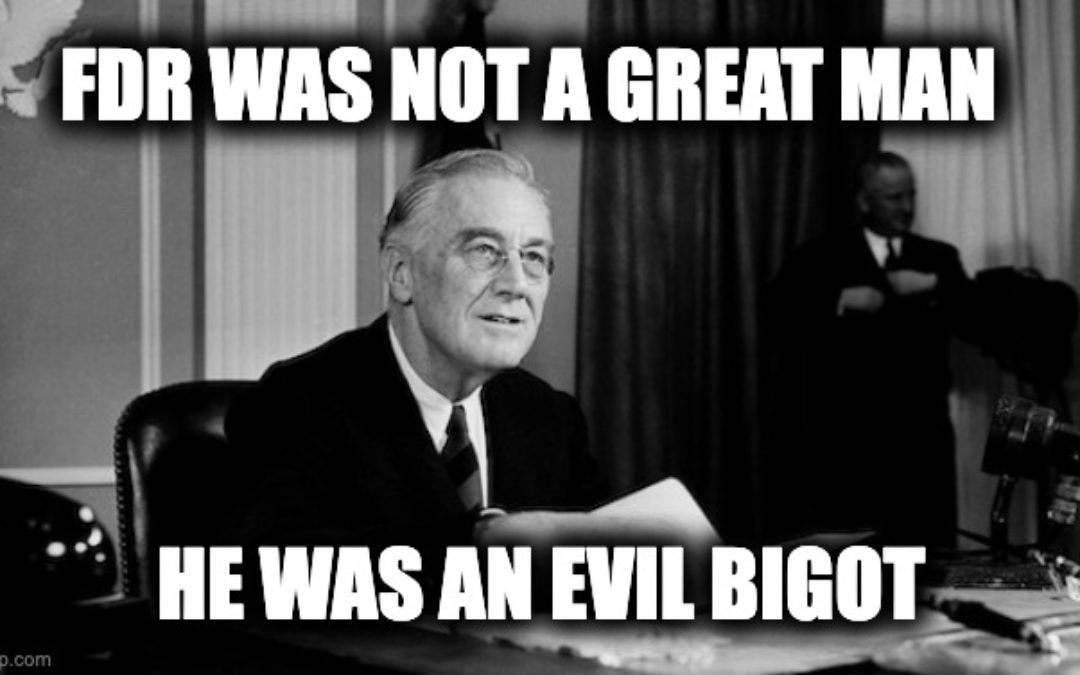This week’s mail brought two particularly interesting items. One was an announcement that a Jewish organization plans to honor two filmmakers for their recent Holocaust documentary. The other was a scholarly Holocaust journal that included information that shatters one of the significant claims of that very film.
The honorees, Lynn Novick and Sarah Botstein, co-directed the recent Ken Burns documentary, “The U.S. and the Holocaust.” In the film’s opening minutes, the narrator asserts that from 1933 to 1945, the Roosevelt administration admitted “some 225,000 refugees from Nazi terror, more than any other sovereign nation took in.”
In numerous interviews during the past year, Burns, Novick, and Botstein have repeated that claim word for word. It’s not just a statistic. It’s an attempt to defend FDR’s reputation. It says, “Sure, President Roosevelt didn’t save everybody, but he didn’t abandon the Jews—he took in more than anybody else.”
Even if that statement were true, it’s a strange argument. Roosevelt’s response to the Holocaust should not be minimized or excused because other world leaders did much less than they could have. It’s not impressive if the president of a country claiming to represent high ideals of humanitarianism had been slightly more generous in admitting refugees than various despots and dictators worldwide.
But what makes the Burns-Novick-Botstein claim about FDR and refugees all the more troubling is that it’s not even true.
The first clue that there’s something suspicious about the Burns-Novick-Bostein claim is its awkward wording. The phrase “any other sovereign nation” sticks out like a sore thumb. Ordinarily, one would say, “any other country.” Why insert the word “sovereign”?
In an interview with The Daily Beast last year, Burns explained the strange choice of words. Responding to criticism of his handling of the immigration statistics, Burns admitted he uses the term “sovereign nation” to distinguish Jewish refugee immigration to America from the fact that “people escaped to other places, like Palestine.”
But why would Burns want to disqualify Palestine from the conversation? Why resort to a technicality about sovereignty to push Palestine out of the discussion? Why does sovereignty matter?
Even though Palestine was not sovereign, the ruling authorities there—the British—indeed were a sovereign power, and they had to decide how many Jews to admit either to the United Kingdom or to the territories under its control. Likewise, President Roosevelt had to decide how many Jews he would admit either to the mainland U.S. (the quotas were seldom filled) or to the non-sovereign territories America controlled, such as the U.S. Virgin Islands.
While FDR chose to keep Jews out of the Virgin Islands, the British admitted many Jewish refugees to Palestine during the early Nazi years before slamming the doors almost wholly shut during the mass murder period.
From 1933 to 1945, the British admitted more than 250,000 Jews to Palestine. Additional thousands were granted haven in other British colonial possessions.
Tens of thousands were also admitted to the United Kingdom itself. In the wake of the Kristallnacht pogrom, the British took 10,000 German Jewish children to the famous kindertran ports and 15,000 young Jewish women as nannies and housekeepers. By contrast, FDR’s response to Kristallnacht was to temporarily extend the visitor visas of 5,000 German tourists in the United States (the president’s initial claim that it was 12,000-15,000 was a considerable exaggeration).
This doesn’t mean the British government was some great rescuer of the Jews. It could have admitted many more Jewish refugees to Palestine and elsewhere, especially when Jews needed it most. But it admitted more than President Roosevelt did.
Even if Palestine is arbitrarily removed from the equation, the Roosevelt administration still doesn’t qualify as accepting more Jewish refugees “than any other sovereign nation.” That distinction actually belongs to the Soviet Union.
And that brings us to the second exciting item in this week’s mail—the latest issue of Holocaust and Genocide Studies, the official journal of the U.S. Holocaust Memorial Museum. In this issue, a University of Pennsylvania scholar refers to “the Polish Jews who took refuge in the USSR” following the Nazi invasion of Poland in 1939.
Just how many Polish Jews took refuge there? There were “the 300,000 Jews who fled eastward” to the Soviet Union in 1939, and then another “100,000 Jews that fled or were evacuated” to the USSR in the summer of 1941, the author notes.
This is not new or controversial information. The number 300,000 has also been posted on the U.S. Holocaust Museum’s website for many years.
Remarkably, the filmmakers, now honored by a Jewish organization, did not bother to check the numbers before deciding to make their erroneous claim about refugees as one of the major themes of their film. It’s equally remarkable that they have kept repeating that misinformation in interviews since then, even though many critics have pointed out their error. Acknowledging the facts would contradict their predetermined narrative about FDR and the Holocaust.
Dr. Medoff is the founding director of The David S. Wyman Institute for Holocaust Studies and the author of more than 20 books about Jewish history and the Holocaust. His most recent book, America and the Holocaust: A Documentary History, was published by the Jewish Publication Society of America / University of Nebraska Press. And available on Amazon(as are his other books).






